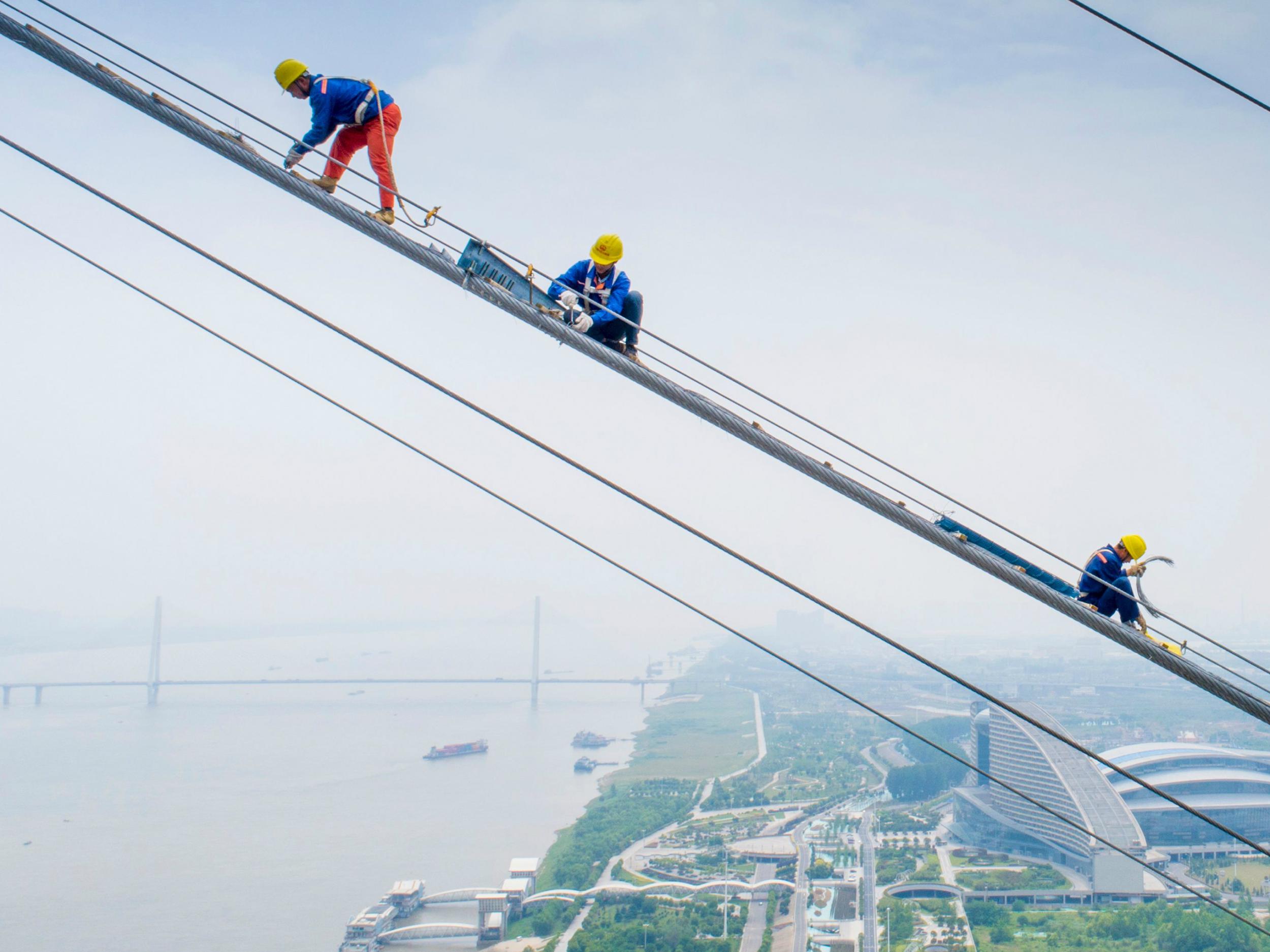China's $8 trillion construction programme 'riskiest environmental project in history'
By middle of this century 7,000 infrastructure projects are planned to span 64 countries across Asia, Africa and Europe

Your support helps us to tell the story
From reproductive rights to climate change to Big Tech, The Independent is on the ground when the story is developing. Whether it's investigating the financials of Elon Musk's pro-Trump PAC or producing our latest documentary, 'The A Word', which shines a light on the American women fighting for reproductive rights, we know how important it is to parse out the facts from the messaging.
At such a critical moment in US history, we need reporters on the ground. Your donation allows us to keep sending journalists to speak to both sides of the story.
The Independent is trusted by Americans across the entire political spectrum. And unlike many other quality news outlets, we choose not to lock Americans out of our reporting and analysis with paywalls. We believe quality journalism should be available to everyone, paid for by those who can afford it.
Your support makes all the difference.China’s $8 trillion plan to create a new Silk Road with sea and land links across Asia is the “riskiest environmental project in history”, a global expert on major infrastructure projects has said.
The Belt and Road initiative is already underway. It aims to boost trade and economic growth across a vast area of the globe through the building of massive new transport infrastructure and energy projects.
But Professor William Laurance of James Cook University in Australia has warned it could be the riskiest environmental venture ever undertaken.
“China has enormous ambitions, but with that comes enormous responsibilities,” he wrote in the Nature Sustainability journal.
If all goes to plan, the Belt and Road initiative will ultimately span at least 64 nations across Asia, Africa, Europe and the Pacific region.
By 2050 the project could involve 7,000 infrastructure projects seeing $8 trillion (£5.9 trillion) in investment, Prof Laurance and his team of researchers wrote.
Last year, a report by the Fitch credit rating agency said $900bn (£660bn) worth of projects were planned or already underway.
The initiative is made up of two main components: the Silk Road Economic Belt, and the 21st Century Maritime Silk Road.
The belt is to be an overland corridor linking China to the Middle East, central Asia and continuing on to Europe. Oil pipelines, bridges, tunnels and rail and road links will be built to sustain it.
The road will be made up of sea links between China, east Africa and countries around the Mediterranean.
The Worldwide Fund for Nature (WWF) has warned that the planned corridors overlap with the range of 265 threatened species including saiga antelopes, tigers and giant pandas.
They have also identified that routes overlap with 1,739 designated important bird areas or key biodiversity areas as well as 46 biodiversity hotspots.
“China claims its Belt and Road will be a blueprint for responsible development, but that’s going to require it to fundamentally change the way it does business internationally,” said Professor Laurance. “Too many Chinese firms and financiers operating overseas are poorly controlled by their government – in large part because they are so profitable.”
He added: “In the last two decades I’ve seen countless examples of aggressive and even predatory exploitation by Chinese firms, especially in developing nations with weak environmental controls.”
But the authors add that the project puts China in a position to change how their developers approach projects outside China which could potentially make them world leaders in sustainability.
“China is doing a much better job of improving environmental safeguards inside China than internationally,” said Professor Laurance. “It has produced a mountain of green documents and promises about the Belt and Road, but a leopard doesn’t just change its spots overnight.
“China has a unique opportunity, but if it’s ‘business as usual’ then the costs for the environment and economic risks for investors could be flat-out scary.”
The report comes as climate scientists warn unfettered economic growth could spur rapid global warming.
Models may have to be recalibrated for projections of what a “worst case” climate change scenario is, as new studies take into account greater global economic growth than previously forecast.
The Centre for International Climate Research in Norway recently said the rise in carbon emissions in Europe over the past four years has come as economic growth has sped up. In 2017, EU emissions rose by 1.8 per cent.
Join our commenting forum
Join thought-provoking conversations, follow other Independent readers and see their replies
Comments